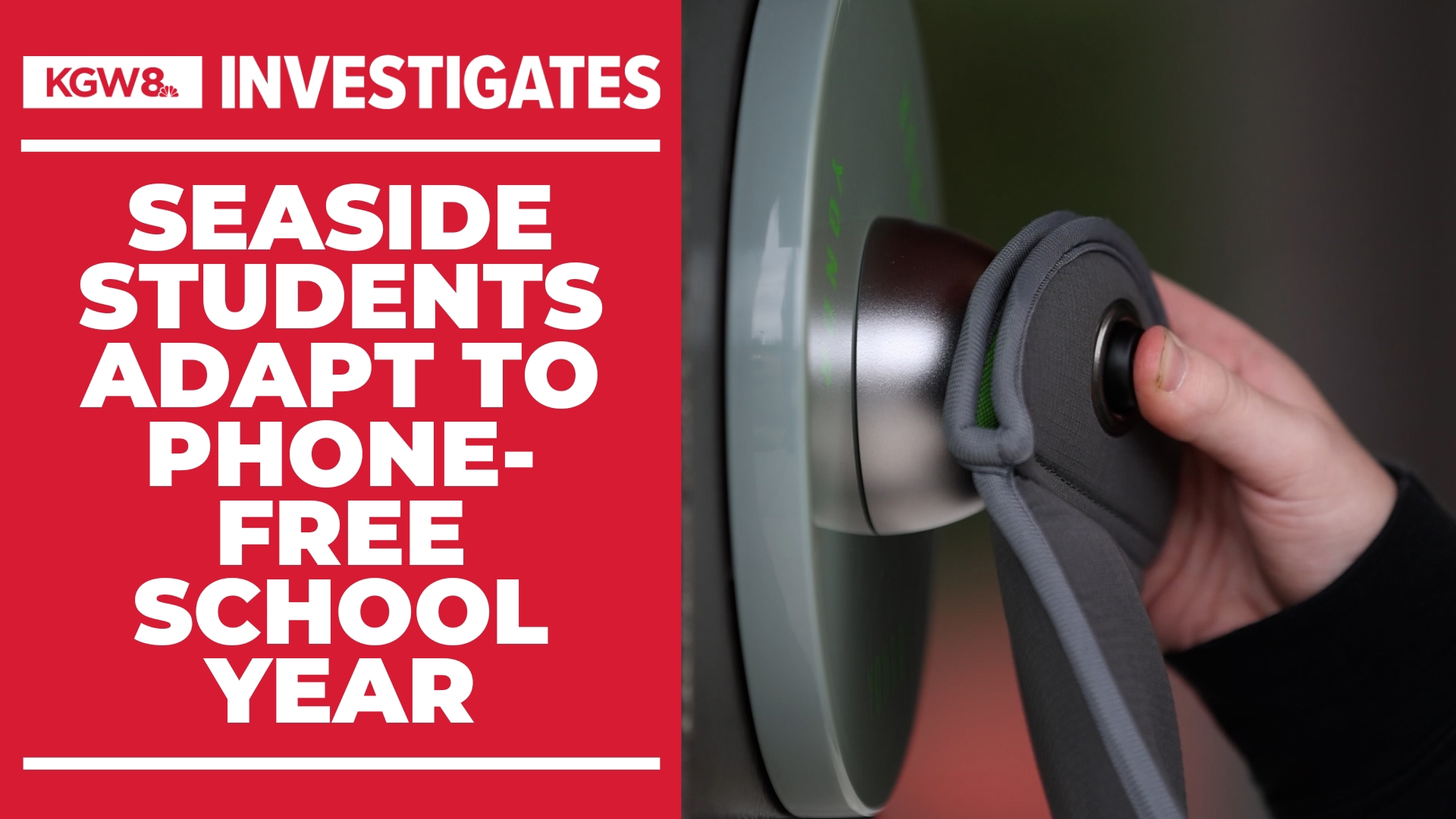SEASIDE, Ore. — Middle and high school students in Seaside are now a month into a big change — a schoolwide no-phone policy that's drawn acceptance and praise from some, frustration from others.
"Personally, I did hate it at first, I hated the idea of not having my phone," said junior Klarissa Rubio. "But now that I've actually been through it, the day goes by pretty fast."
Starting this fall, Seaside's combined middle and high school (grades 6 through 12) is phone-free.
School leaders announced the change in the spring to give students a full summer to prepare themselves for the change — part of a growing trend across Oregon and the country.
Seaside is using Yondr pouches — locking cases designed to prevent students from puling out their phones in class. The pouches lock and unlock at stations near the school entrance which are only available at the start and end of each school day.

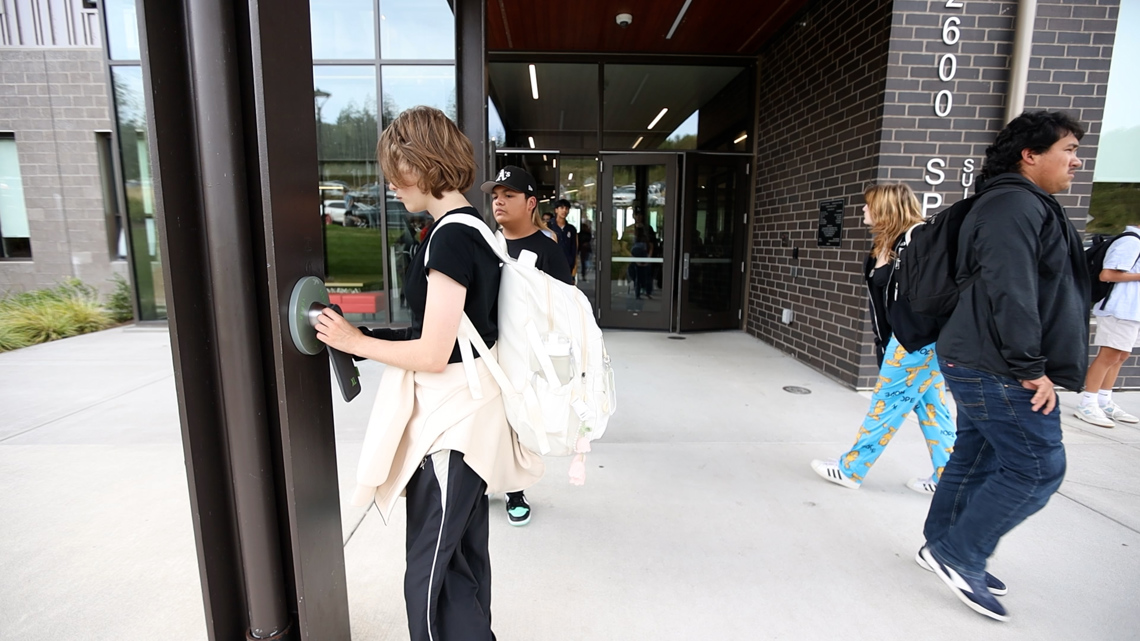
"It's been a game-changer; it really has," said Jeff Roberts, principal of Seaside Secondary School. "We kidded ourselves for a long time that having small computers in our kids' hands were going to really help, and what we found out was the distraction was just too much."
KGW visited Seaside to hear students' initial impressions of the no-phone policy. The feedback was mixed, but perhaps not as negative as one might expect.
"Coming into it this year at school, it was just more of an uncomfortable transition if anything; it's not completely unbearable," said senior Savana Pedraza.
"It has its ups and downs. I feel like now I can communicate with more people around me that I never talked to before," said Rubio. "I communicate with my teachers more; definitely, my grades have gotten better."
"People trying to DoorDash (for lunch), that was a downside," said senior Maria Herrera with a laugh.
"Seeing it now, it's shocked me how much more I've done this year than my other years here," said senior Rene Montez.
"I can't take my phone out to take pictures of notes (or send things for schoolwork) that's pretty much the downside, you're going to have to adapt," Pedraza added.
Herrera, who said she uses a Yondr pouch each day, discovered she could be more efficient with her schoolwork.
"It just got me to a point where I could pick up a book and start reading again and doing homework (at school) ... where I could focus," she said.
Rubio said she's improved in her worst school subject.
"I was lacking in math and I feel like that's the only class I picked up my phone," Rubio said. "Usually I wouldn't ask questions, I'd ask (artificial intelligence). Now I ask my teacher and he explains it perfectly to me."
Pedraza, another upperclassman who said she's adapted to the new rules, said she has noticed a difference between grade levels.
"I honestly think people don't really mind it at this point, I mean, there's definitely more underclassmen against it," Pedraza said.

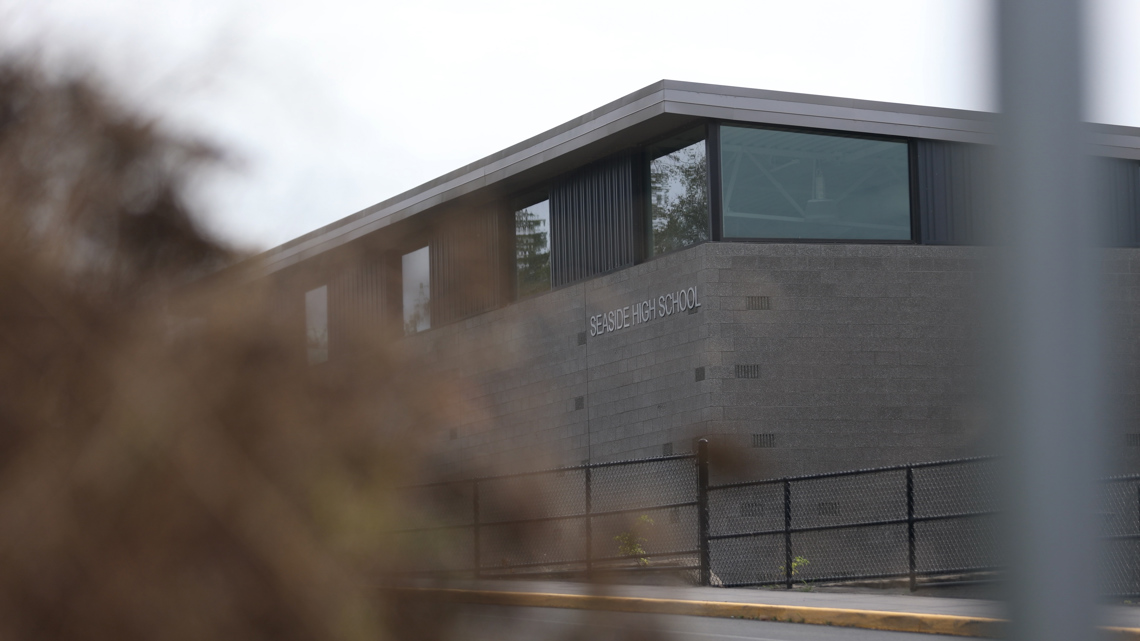
Ninth graders Emry Huntington and Kaydence Parsons are two of the Seaside students against the Yondr pouches and no-phone policy.
"Sometimes I'm having a hard time and I need support from my best friends, and that's just so hard," Huntington said. "Now if I want to contact my friends, I have to email them like, what, I'm a pilgrim? It's not right."
The duo laughed while admitting that they, and others, have tried and failed to break the Yondr pouches at school to access their phones.
Huntington, Parsons, and multiple other students said they're concerned about emergencies, ever-aware of the threat of school shootings or other crises and how they'd communicate with their loved ones.

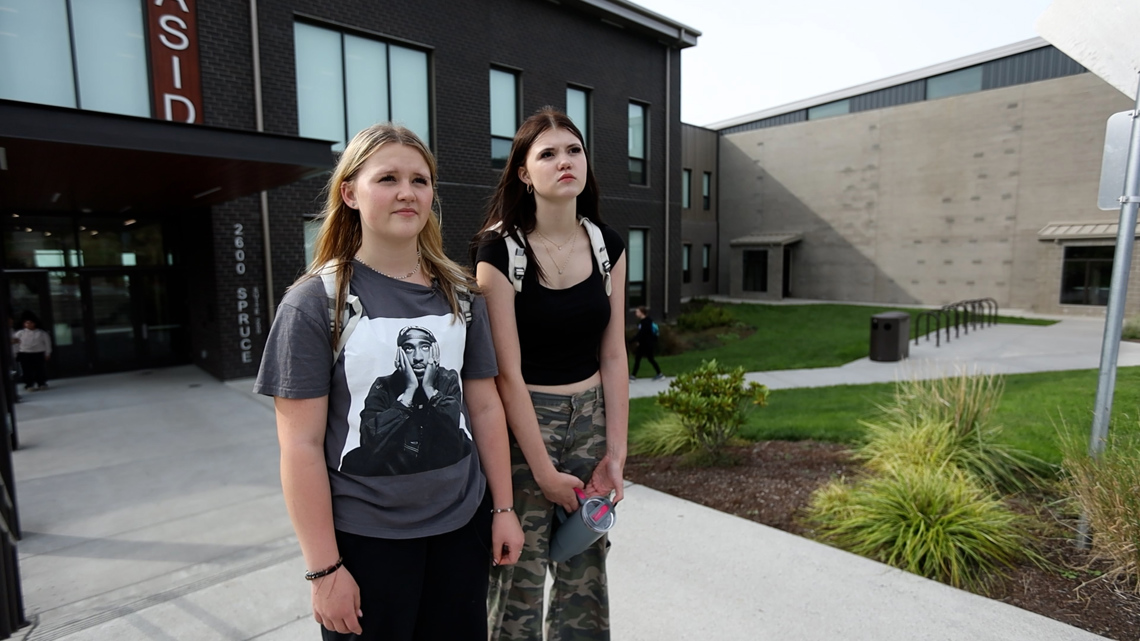
Parsons said it's frustrating that she and others can't easily communicate with their parents during the day, which makes extracurricular and after-school plans harder.
Plus, there's envy of the older students who had years of no restrictions.
"I just think that we are finally in high school and we would like to take pictures and experience high school with our phones like everybody else did," Parsons said.
"People that are good, like us, we are good, we are not naughty, we are not using our phones during class, we are perfect citizens, but we get punished too," Huntington said. "Can you believe that?"
At the closing bell on a September school day, most Seaside students walked right past the unlocking stations without opening a pouch.
Students like Savana Pedraza said there's a simple explanation for that.
"Most kids are keeping their phones in their cars, anyway," she said.
Roberts said it's fine with him if students ignore the pouches — as long as they're leaving their phones somewhere else, Seaside has still created a phone-free school environment.
"We're not searching through backpacks to determine whether or not somebody put (their phone) in their Yondr pouch," Roberts said. "You know, it's not a problem until it's a problem, is truly how we're treating it."
Seaside spent about $25,000 on purchasing roughly 1,000 Yondr pouches using ESSER grant funds from the federal government. If students were going to avoid using the pouches anyway, could the school have saved that money and simply banned cell phones?
"Could you have? Sure. I mean, we're really fortunate that we had the funding to do this because I do think it was a tangible piece that allowed us to really show that we were serious about this — and if there is a violation, it's a real quick fix," Roberts said.

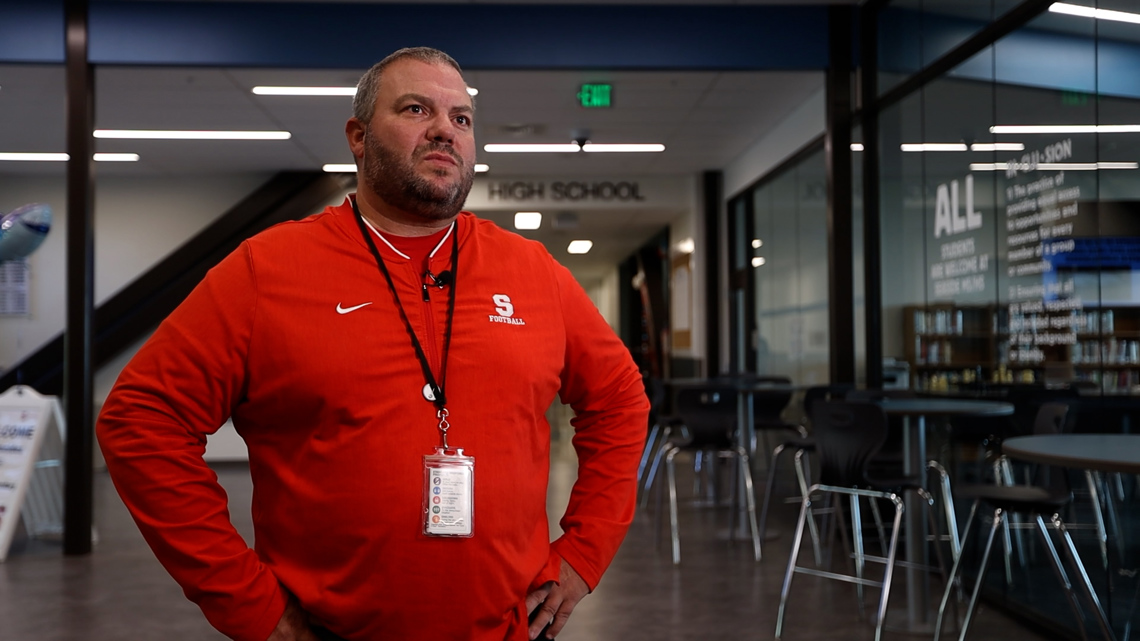
Roberts, who's worked in the district since 2011 and has been principal for about seven years, said his staff is ecstatic about the change.
He estimated that 95% of parents are in support — and students are, as expected, mixed.
Some students told KGW that they felt about 65% of the school is at least understanding or accepting of the no-phone policy, others said it was closer to 40%.
However, Roberts said he believes the change is working.
"You go up into the cafeteria and it's loud, right? This is how school cafeterias should be, students engaging with each other," Roberts said. "Today was the first day in almost two weeks that I was summoned to a classroom to take a phone. That's pretty good, and so I'm really proud of my kids for being responsible ... and hopefully it pays massive dividends for them."
Montez said it gives him high hopes for his senior year.
“I hope that I can really be more focused, on-task, and really try better than my other three years here and make my dad proud," Montez said.

